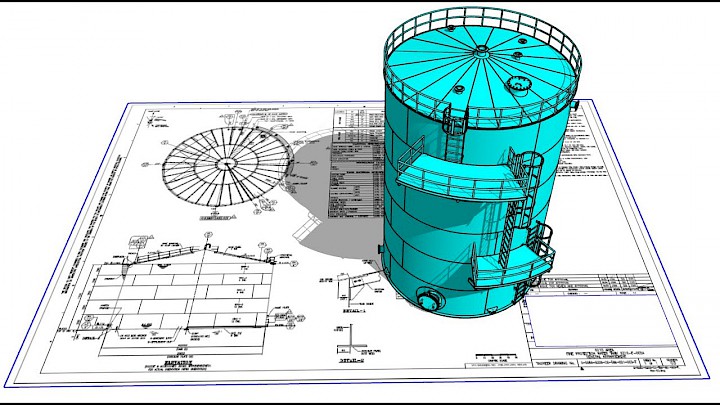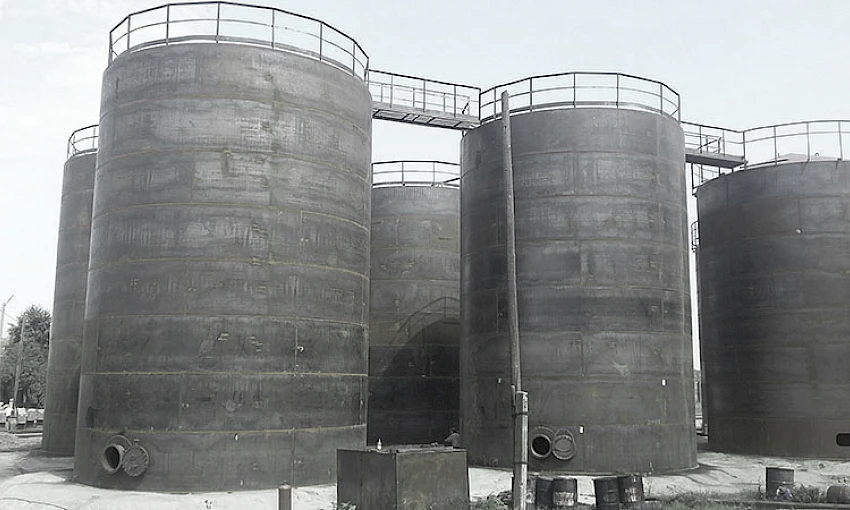Just How Welding Examination Functions: A Comprehensive Guide for Professionals
Welding examination plays an important function in ensuring the safety and security and dependability of bonded structures. It entails a systematic technique that includes both visual assessment and advanced testing approaches. Professionals have to familiarize themselves with crucial standards and policies controling the sector. Understanding the typical defects that can occur throughout welding is important. This guide will explore these components carefully, supplying understandings into the processes that copyright quality and stability in welding.
Understanding the Value of Welding Assessment
While numerous may take too lightly the value of welding inspection, it plays a necessary duty in ensuring the stability and safety and security of bonded frameworks. Effective welding inspection identifies possible defects and flaws that can compromise structural strength and lead to catastrophic failures. The assessment procedure incorporates numerous methods, such as aesthetic evaluations, ultrasonic testing, and radiographic assessments, each contributing to the overall analysis of weld top quality.
Along with securing the structural stability, welding evaluation assures compliance with sector requirements and client requirements. By making sure that welds fulfill needed characteristics and tolerances, examinations aid preserve the reliability and long life of elements in various applications, from building and construction to aerospace. An extensive evaluation procedure promotes a society of high quality and responsibility amongst welders and producers. Inevitably, welding evaluation is not just a procedural action; it is an essential method that underpins the safety and security and performance of crafted systems across diverse markets.
Key Specifications and Rules in Welding Evaluation
The structure of effective welding assessment rests on adherence to established criteria and policies. Different companies, such as the American Welding Culture (AWS) and the American National Specification Institute (ANSI), established forth guidelines that ensure high quality and safety in welding methods. Secret criteria, such as AWS D1.1 for structural welding and ASME Section IX for pressure vessels, supply thorough requirements for welding treatments, qualifications, and evaluations. Governing structures, including those from the Occupational Security and Health Administration (OSHA), mandate safety methods and worker protections in welding atmospheres. Compliance with these standards is important for achieving consistent weld quality and reducing the risk of failures. Additionally, worldwide requirements like ISO 3834 additionally improve worldwide consistency in welding evaluation practices. Professionals have to remain educated about these guidelines to assure that their evaluation techniques straighten with industry expectations and lawful demands, consequently securing both workers and structural honesty.
Preliminary Preparation and Aesthetic Assessment Techniques

Reliable welding evaluation starts with an extensive pre-inspection checklist that ensures all necessary conditions are fulfilled before the real assessment takes place. Following this prep work, visual issue identification plays an essential function in reviewing weld high quality, permitting inspectors to find concerns such as cracks or incorrect blend. Together, these methods create the foundation for a successful welding assessment procedure.
Pre-Inspection Checklist
Before commencing any kind of welding evaluation, a detailed pre-inspection checklist is necessary to assure that all necessary preparations are completed and that aesthetic evaluation strategies are successfully used. Key components of this checklist include verifying the welding procedure spec (WPS), seeing to it all tools is adjusted and in excellent functioning problem, and validating that the assessor has the required certifications. Additionally, it is important to examine any type of previous assessment records and to analyze the workplace for safety and security hazards. The assessor should also verify that all relevant documents, such as product certifications and examination documents, is conveniently offered. Finishing this list assists to establish a solid structure for an effective examination process, boosting the reliability of the outcomes obtained.
Aesthetic Defect Recognition
A successful aesthetic flaw recognition procedure begins with cautious preliminary preparation and the application of well established visual evaluation methods. Assessors ought to guarantee that the welding location find this is clean and well-lit, as sufficient visibility is essential for spotting problems. An extensive examination of the weld joint's surface allows for the identification of suspensions, such as splits, damages, or porosity. Inspectors usually utilize devices like amplifying glasses or mirrors to enhance their view of hard-to-reach locations. Additionally, they need to know with the certain welding standards and guidelines pertinent to the project. By adhering to these approaches, inspectors can efficiently recognize potential problems, safeguarding the stability of the weld and conformity with sector standards.
Non-Destructive Testing Approaches: An Overview
Non-destructive screening (NDT) methods play an essential role in the welding examination process by making certain the honesty and reliability of bonded frameworks without creating any damage (API 650 Welding Inspection). These methods enable assessors to evaluate the quality of welds while protecting the elements being taken a look at. Usual NDT approaches include ultrasonic testing, Recommended Reading radiographic testing, magnetic bit testing, and dye penetrant testing, each offering special benefits
Ultrasonic testing utilizes high-frequency acoustic waves to identify inner flaws, while radiographic screening makes use of X-rays or gamma rays to visualize the internal framework of welds. Magnetic particle testing reveals surface area and near-surface defects by using a magnetic area and iron fragments to the weld location. Color penetrant screening highlights surface-breaking problems with the application of a colored dye. Together, these NDT methods provide crucial insights right into weld top quality, making it possible for specialists to make enlightened decisions regarding safety and conformity in welding applications.
Common Flaws and Their Implications
Identifying usual flaws in welded joints is vital for preserving structural honesty and security. Various defects can emerge throughout the welding process, each bring potential effects for the general performance of the framework. Porosity, defined by small gas pockets within the weld, can deteriorate the joint and jeopardize its load-bearing capacity. Splits may create because of thermal tension or inappropriate air conditioning, leading to possible failure under stress and anxiety. Insufficient blend happens when the weld metal does not completely bond with the base material, leading to weak joints that may not stand up to intended lots. Undercutting, where the base steel is eroded, can likewise reduce the efficient cross-section of the weld. Additionally, extreme support can create stress and anxiety concentrations that might lead to failure. Recognizing these flaws promptly permits rehabilitative procedures, making sure the longevity and dependability of bonded structures in critical applications.
Devices and Tools Used in Welding Examination
Effective welding assessment counts on a variety of specialized devices and tools to assure the quality and stability of bonded Get More Information joints. Essential instruments include aesthetic examination tools, such as amplifying borescopes and glasses, which permit inspectors to carefully take a look at welds for surface area issues. Non-destructive testing (NDT) techniques, such as ultrasonic screening, radiographic screening, and magnetic fragment testing, are fundamental for determining inner imperfections without harming the product.
Dimension devices, consisting of calipers and weld determines, help assess dimensions and determine compliance with specifications. Additionally, hardness testers assess the mechanical properties of bonded joints. Individual safety devices (PPE) is likewise critical, securing the safety and security of assessors while operating in possibly harmful atmospheres (API 650 Welding Inspection). Each tool serves a specific objective, jointly improving the efficiency of welding inspection and contributing to the integrity of finished jobs
Frequently Asked Questions
What Credentials Are Required to Become a Welding Assessor?
To come to be a welding examiner, people commonly need relevant certifications, such as AWS CWI or CSWIP, in addition to experience in welding procedures, engineering concepts, and understanding of inspection strategies, security standards, and relevant codes.
Exactly How Frequently Should Welding Inspections Be Performed?
Welding examinations must be conducted regularly, preferably at various task stages, consisting of pre-weld, during-weld, and post-weld. Frequency might also depend upon industry requirements, task specs, and the intricacy of the welds included.
Can Welding Defects Be Fixed After Evaluation?

Yes, welding flaws can frequently be repaired after assessment. Relying on the extent and kind of problem, appropriate techniques such as remodeling or additional welding might be employed to restore architectural integrity and security compliance.
What Industries Require Normal Welding Assessments?

Numerous sectors, consisting of building and construction, production, aerospace, and automotive, require regular welding inspections - API 650 Welding Inspection. These inspections guarantee adherence to safety standards and quality assurance, reducing risks associated with structural integrity and operational efficiency in bonded elements
Exactly how Do I Choose a Welding Evaluation Service?
To choose a welding examination solution, one must think about certifications, experience, accreditations, and industry credibility. Additionally, reviewing consumer evaluations and guaranteeing the solution satisfies relevant criteria can assist ensure quality examinations and trusted outcomes.

While numerous might ignore the value of welding assessment, it plays an important function in making sure the stability and safety and security of welded frameworks. Secret criteria, such as AWS D1.1 for architectural welding and ASME Section IX for stress vessels, give complete standards for welding credentials, inspections, and procedures. Efficient welding examination starts with a comprehensive pre-inspection list that ensures all essential problems are fulfilled prior to the real inspection takes location. Before beginning any kind of welding examination, a thorough pre-inspection list is necessary to guarantee that all necessary preparations are completed and that aesthetic inspection techniques are efficiently utilized. Non-destructive testing (NDT) methods play a vital function in the welding evaluation process by ensuring the integrity and integrity of bonded frameworks without triggering any damage.